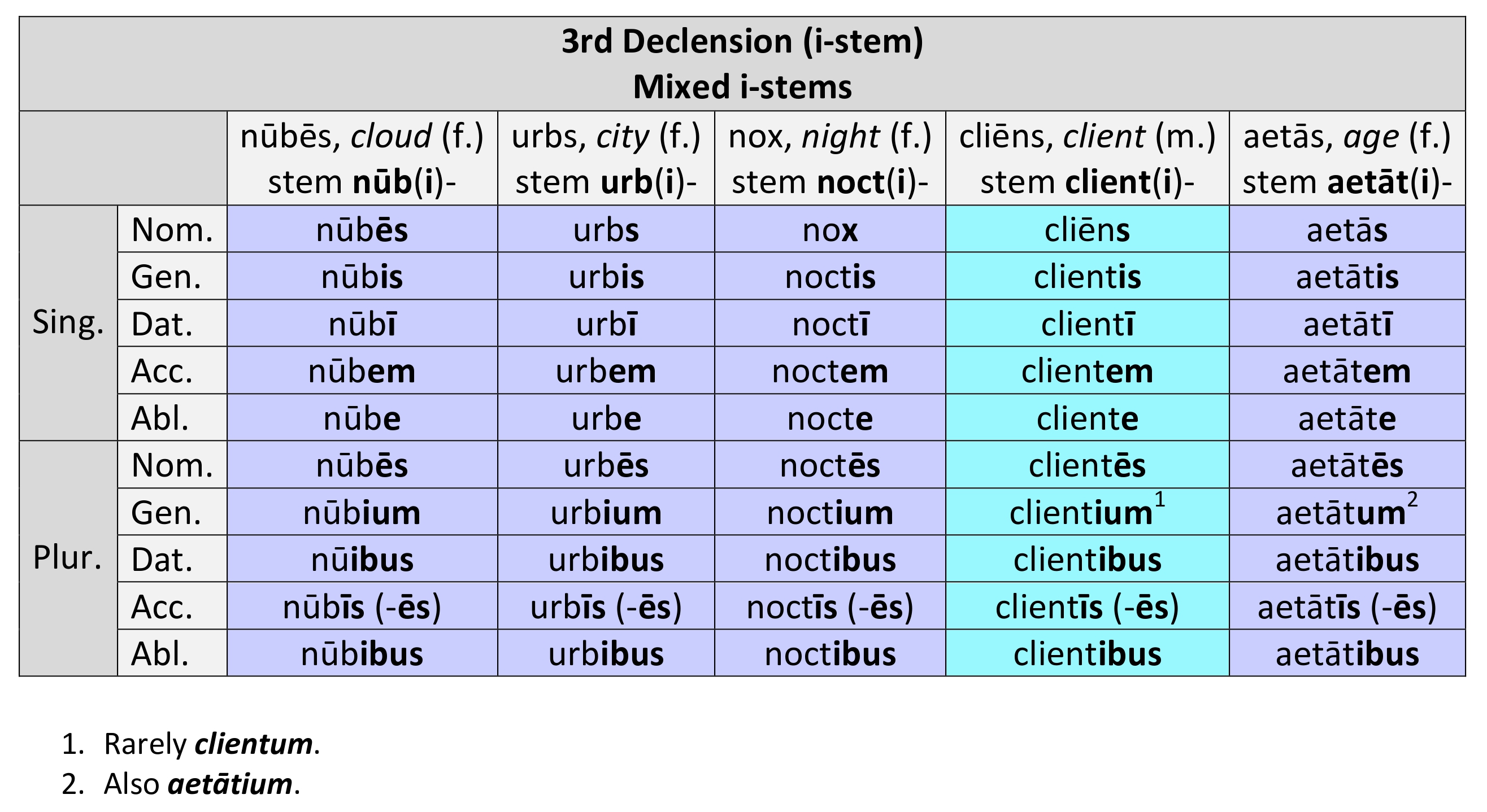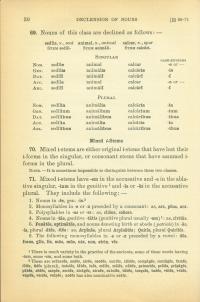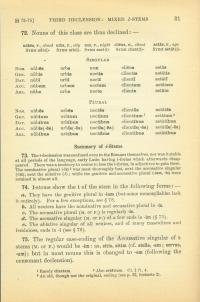70. Mixed i-stems are either original i-stems that have lost their i- forms in the singular, or consonant stems that have assumed i- forms in the plural.
Note— It is sometimes impossible to distinguish between these two classes.
71. Mixed i-stems have -em in the accusative and -e in the ablative singular, -ium in the genitive,1 and -īs or -ēs in the accusative plural. They include the following:
- Nouns in -ēs, genitive -is.2
- Monosyllables in -s or -x preceded by a consonant.
ars, pōns, arx
- Polysyllables in -ns or -rs.
cliēns, cohors
- Nouns in -tās, genitive -tātis (gen. plural usually -um.3
cīvitās
- Penātēs, optimātēs, and nouns denoting birth or abode (patrials) in -ās, -īs, plural -ātēs, -ītēs.
Arpīnās, plural Arpīnātēs
Quirīs, plural Quirītēs - The following monosyllables in -s or -x preceded by a vowel.
dōs, fraus, glīs, līs, mās, mūs, nix, nox, strix, vīs
72. Nouns of this class are thus declined:
Footnotes
2.These are acīnacēs, aedēs, alcēs, caedēs, cautēs, clādēs, compāgēs , contāgēs, famēs, fēlēs, fidēs (pl.), indolēs, lābēs, luēs, mēlēs, mōlēs, nūbēs, palumbēs, prōlēs, prōpāgēs, pūbēs, sēdēs, saepēs, sordēs, strāgēs, struēs, subolēs, tābēs, torquēs, tudēs, vātēs, vehēs, veprēs, verrēs, vulpēs; aedēs has also nominative aedis.
3.There is much variety in the practice of the ancients, some of these words having -ium, some -um, and some both.



